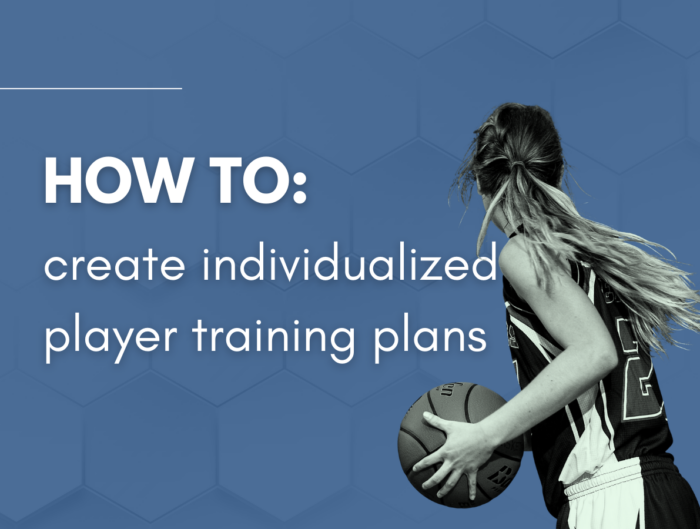Exercise is a stressor that induces various physiological and psychological responses. To optimize these responses, coaches need to control the stress imposed on the athletes. The athlete’s response to stimulus is specific to the nature, intensity and duration of the exercise task.
Training load has been described as the combination of physiological and psychological stressors that are manipulated to elicit the desired training response. This measure can be a way for the coach to assess a team’s fatigue levels or for a player to assess their own individual fatigue levels.
Monitoring fatigue can be an incredibly valuable technique for a coaching staff as fatigue is one of the controllable risk factors for many soft-tissue injuries which plague our athletes. While intuitively we may attribute many of these injuries to trauma or contact to the affected limb or body segment, it is less commonly known that up to 70% of all soft-tissue injury can occur in the absence of contact! An effective way to minimize or mitigate this risk factor is through Load Management.
Workload can be described as being either external and/or internal depending if we are referring to measurable aspects occurring internally or externally to the athlete.
Workload, as presented by Beyond Pulse, is a measure of External workload. Thus, by definition, our Workload metric is a measure of the external stimuli applied to an athlete during your training session. For example, in soccer, external load can be described by measures of a combination of total distance covered, sprint distance, and # of sprints (accelerations/decelerations). The organization, quality and quantity of your training plan will largely determine the external workload, which is defined as the physical work prescribed in your session.
**Note: Heart Rate is not factored into the calculation of the Beyond Pulse Workload metric. **
Reading the Workload Dial and Timeline:
Workload, is expressed in units of Training Impulses (TRIMPs). A ‘TRIMP’ can be thought of as just a unit. If I asked you, ‘What is a Volt,’ your answer would likely be, ‘a unit of electricity.’ Similarly, TRIMP is just simply a unit of Workload. TRIMPs is a product of both session intensity (Number of Sprints, Percentage at High Speed, Speed Zones) and volume (Distance) performed by an athlete during his/her session.
Generally speaking, a session can be categorized as having a low (0-10 TRIMPs), moderate (10-20 TRIMPs) or high (20+ TRIMPs) Workload. This scale can be found by scrolling over the “ ? ” icon above, and to the right, of the Workload dial (Figure 1). However, coaches should note that this is a general guide. Thus, these zones may differ slightly by age, skill level, and fitness of your team.

Figure 1. Workload dial and scale as presented on your coach and/or player session summary screen.
Within the Workload timeline on your Beyond Pulse Coaches or Player dashboard, you will find two additional tools to help you monitor your Workload from your training session. For uniformity we provide an overview of your session both graphically and numerically for an in-depth analysis.
The graph here, simply put, is measuring distance per minute (a measure of the speed) over the course of your session. Thus, thin, tall peaks would indicate the athlete(s) are doing a very high-speed activity over a short period of time (sprint-like) or a broad but lower peak might indicate a low speed activity run for a long period of time. At any points where the line touches 0 would indicate that the athlete is static (Figure 2).
Use the Slice-and-Dice feature to break your session down and label each activity. Were your transitions the length you planned? Were players slow to join from the water break? Which activity was the more strenuous or had the highest workload? These questions can all be answered by simply slicing your session (Figure 2).

Figure 2. Distance per minute graph showing areas of no activity (static) low intensity activity and high intensity activity within a single training session. Also showing training session with sliced segments of each drill. From left to right; Warm up, Drill 1, Drill 2.
In the Stats Table located at the bottom of your dashboard, Workload is broken down by activity intensity (Figure 3). Workload is categorized by intensity to be either low, medium, high or max intensity. It should be noted that these zones are related to, but do not perfectly correspond to the speed zones, since we know Workload is both a product of intensity and volume. Using the stats table (Figure 3), it is easy to break down your session to see how many TRIMPs were accumulated in each of these zones, which can help you as a coach prepare for future sessions.

Figure 3. Stats table showing overview of workload and corresponding low, medium, high and max intensity zones for a full training.
The best part, the Slice-and-Diced segments you created using the graph are carried forward, and now display their own TRIMP values (Figure 4). Note each of these are expandable to show the breakdown for each player during each drill.

Figure 4. Break down of a full training session by drill as performed using the Beyond Pulse Slice-and-Dice feature.
From here, a coach can begin to reflect introspectively; Is a particular drill more demanding than I anticipated? Are there players who are inactive during a drill, and can I increase the number of grids, groups etc? Can I alter the shape of the play area to alter the overall Workload?
These additional components are critical to understanding and monitoring Workload in your training environment. Though Workload is accumulated during all types of movements while wearing your Beyond Pulse Smart-belt, it is important to understand the relationship between the intensity zones and the overall Workload of your session. Simply put, Workload is accumulated more quickly as intensity is increased. Meaning that a 10-minute activity at low intensity will result in a lower Workload than a 10-minute activity at Moderate Intensity and likewise for High and Max Intensities. However, remember that workload is also a function of volume (distance and time). Meaning that, a session with low intensity may still have a high Workload since the amount of distance covered and/or the length of the practice also affect your overall session Workload.
Using these tools, you can begin to monitor the response of your athletes. Having a pulse on how your team is responding to your training sessions can help any coach make decisions that ultimately will improve the physical performance of the team and individuals within it.
How to find the Optimal Workload ?
The optimal Workload is a moving target. It differs for every athlete and changes constantly based on multiple factors, such as, age, health status, time of the year, training status, fatigue and recovery levels, position played on the field and non-sport stressors.
Finding the optimal Workload and constantly adapting training programs to the changing capacity of each athlete is both an art and a science. It’s a continuous process that usually requires the daily monitoring of internal load (Heart Rate), at least a measure of external load (Distance Covered, Sprints #, Active Participation, Acceleration/Deceleration), and the use of these measures to adjust the athlete’s training program and recovery.
This section presents simple and effective Workload management strategies that will help you build stronger athletes and keep them healthy and fit.
1) Focus on the essentials and keep things simple
To maximize athletes and staff engagement with your BP Workload management program, focus on the essentials. Coaches often have limited resources and hardly have time to even design training sessions yet alone add something else to their training day. With the BP Workload metric, coaches can begin collecting both external load data on their team and players in very little time.
2) Establish a baseline for your athletes
The most important aspect of managing Workload is the consistency of data accumulation over time. Establishing baselines for your team & players provides great insight for you as coaches to make objective decisions related to training and match days. Understanding how your athletes respond to training loads is monumental when it comes time to rest and recover. Recovery for your athletes will allow them to reduce the risk of injury, prevent overtraining and optimize performance. The BP Workload metric allows a coach to do this without taking time away from a training session while also being consistent about data collection.
3) Manage sessions
Monitoring week-to-week changes in load helps detect spikes in load and plays a crucial role in injury prevention. Many times, these issues are entirely predictable. They occur because athletes are not well-prepared for the physical and psychological demand imposed by the training or competitive task.
It is important that your TRIMPs average does not increase by more than 10% from the preceding week. Also, using an athlete’s age to guide the weekly training and competition volume is a simple and effective approach that can help maximize performance while promoting effective and injury-free athletic development. It has been shown that when young athlete train or compete more hours per week than their age (e.g. when a 12-year-old trains or competes 18h/week), the risk of injury and burnout can increase significantly. As a coach, ensure that your athletes have at least one day of complete rest per week and make sure to alternate between hard and easy days.
Each athlete’s tolerance to load fluctuates on a daily basis and is affected by multiple factors such as sleep, nutrition, hydration, stress, fitness levels etc. At Beyond Pulse, we believe the coach’s best tool is the eraser. Coaches must be able to adjust their sessions on a daily basis to avoid producing unexpected negative outcomes.
4) Encourage open communication with your athletes
Personal feedback from an athlete can help identify potential issues with motivation, stress, fatigue and training. All these factors can influence your athlete’s performance. This crucial information is often overlooked by busy coaches. A very easy way to open dialogue with your athletes is by asking this simple open-ended question at the beginning of each session :
How are you feeling today?
Often coaches try to solve a problem, without ever knowing the problem. All you have to do is ask one simple question. The more the athletes know how much you care, the more they will care how much you know. When coaches connect with athletes, you show them respect and encouragement, when you communicate well and you listen to what they have to say , you build trust and let them know you care.
5) Education
Take time to properly educate players on the importance of healthy lifestyle (sleep, nutrition, hydration, financial management, stress management etc.). As coaches, we often forget that these non-sport activities and external stressors play a large role in determining an athlete’s pre-training fatigue, sleep quality, recovery, motivation and performance. If possible, bring in experts to discuss with your players about the importance of these stressors and to provide.
6) HAVE FUN!!
One of the numbers of reason for quitting sports in young athletes is “lack of fun”!! Coaches often focus on the technical, tactical, physical preparation but sometimes neglect that enjoyment is a crucial part in playing sports. Regardless of the age or level of play, when athletes dislike what they do, they will not be motivated to train hard or compete hard. Make sure your athletes leave the field with a smile!

 FRA
FRA































